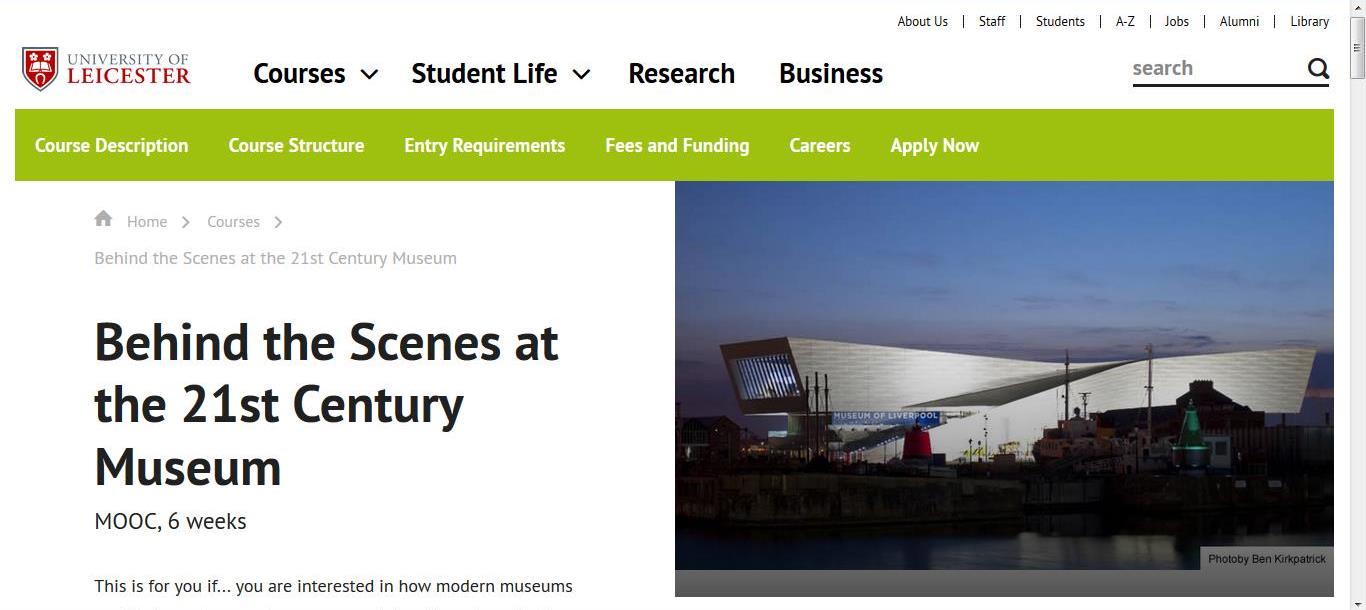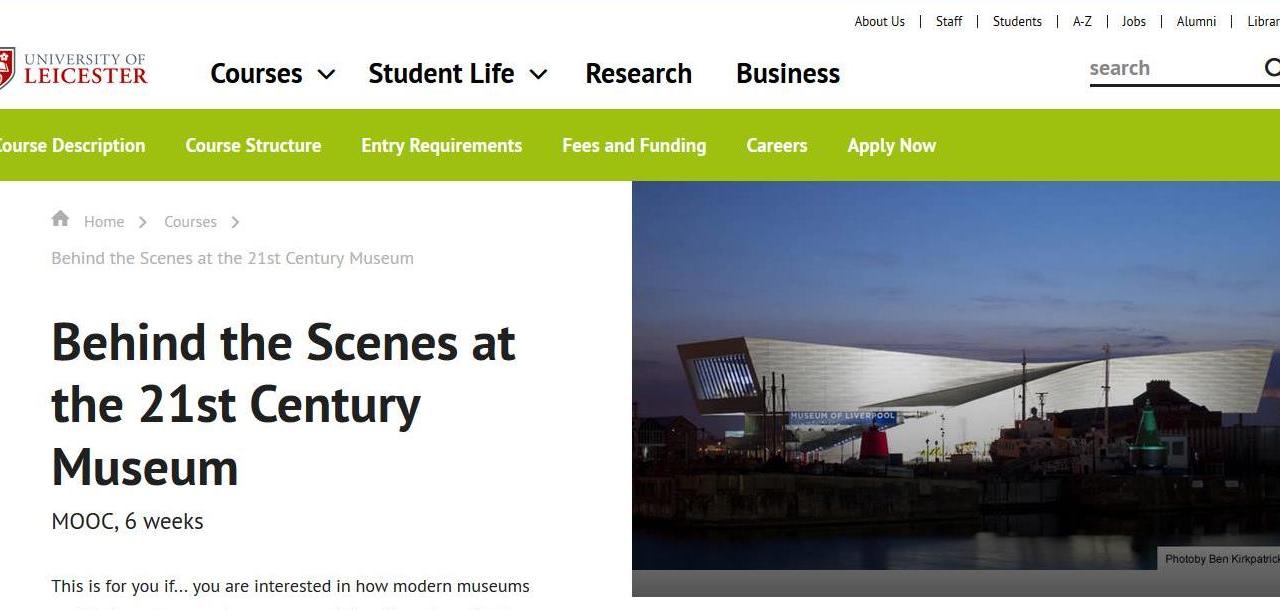<!—->Having started my museum career in a very, very small museum (that no longer exists), I am hypersensitive to the needs of people working in organizations with miniscule resources. Professional development is particularly problematic: even if you can pay for the travel, housing and registration associated with a workshop or short course, who’s going to run the museum while you are gone? Today Elizabeth P. Stewart (director of the Renton History Museum–a very small city history museum outside Seattle, Washington–and vice president of the Washington Museums Association) shares one way to navigate this sticky wicket—via one of the many excellent courses available online. The MOOC she took offered by way of a fringe benefit, an opportunity to contrast museum practice in the US and the UK, where the course originated.
MOOC is a terrible name for training, but Massive Open Online Course is a mouthful. No matter the unwieldy term, in practice online courses can be a useful way for those of us who have trouble getting away from our museums (or, worse yet, our desks) to think about the future. I recently participated in the Behind the Scenes at the 21st-Century Museum MOOC offered by the School of Museum Studies at University of Leicester and National Museums Liverpool, through FutureLearn.com. The course consisted of six weeks of self-paced learning through case studies, video tours, interviews, reading, and interacting with other auditors. Each week consisted of 15 – 20 units that allowed me to digest the course in small chunks (although I spent several Sunday afternoons binging). This MOOC provided a multilayered opportunity to learn new strategies and new ways of thinking, and connect with fellow museum professionals around the world.
The differences and similarities among 21st-century British and American museums were particularly instructive. Among the insights I gleaned:
The UK has tons of research about their museums, and I am envious. I was amazed that the British Department for Culture, Media & Sport compiles detailed statistics about museum visitors. This data fueled a fascinating conversation about tackling barriers to access. 42.3% of Black and minority respondents had visited a museum in the previous year, the lowest percentage of those surveyed, which I found stunning. (I can only dream of the day museum attendance in my community looks like this.)
The Brits are as worried about funding as we are, if not more. The British government has been scaling back cultural support for some years now. Absent the well-developed foundation environment in the U.S. and the American tradition of corporate and individual giving, museum professionals in the UK are very concerned about their institutions’ survival. Consequently, museum people are putting their energy into areas of government concern—see health and wellbeing below—and making the case for museums’ vital role.
British museum professionals have given much thought to the socially engaged museum (but sometimes small museums aren’t buying in). The MOOC’s instructors were ready to push museums into new areas, confronting darker subjects of British history like hate crimes or the domestic use of torture, and their examples were thought-provoking, such as the University of Leicester’s student-led exhibition 100 Stories of Migration. Meanwhile, volunteers from small museums wondered aloud how to tackle such weighty topics when their institutions were still figuring out who would unlock the door on Saturday.
The British are looking for new roles museums can play, in the health and wellbeing of their communities, for example. We spent two weeks on “Museums and Our Emotions” and “Museums and Health and Wellbeing.” Discussions around health were based in the New Economics Foundation’s Five Ways to Wellbeing:
- Connect
- Take Notice
- Give
- Keep Learning
- Be Active
The Happy Museum Project proposes a similar set of principles. Again, the course provided helpful examples of museums reaching out to seniors, cognitively impaired people, the disabled, and others who might benefit from access to the cultural, intellectual, and spiritual stimulation that only museums can provide.
Everyone’s struggling with the twin tensions of access and preservation. A unit on engaging new audiences used the example of a London Evening Standard article about children climbing on a Donald Judd sculpture at the Tate Modern. MOOC participants hashed out the extent to which we as curators of important objects are willing to share what we care about. Do kids belong in art museums? The Kids in Museums Manifesto says, “yes, if we want museums to have a viable future.”
Internationally, museum professionals are starting to prepare for the postdigital museum. Ross Parry, Senior Lecturer in Leicester’s School of Museum Studies, is pioneering explorations of how digital technology has already become the norm in museums—certainly in large well-funded ones, but even in small ones like my own, where we rely almost solely on social media for marketing our programs. What does a postdigital future hold for museums, the core mission of which is storytelling with material objects?
The British are very polite online. They are endlessly patient with people who disagree with them, which makes for a very productive online learning experience.
Museum people are delightful all around the world. MOOC Participants lived in Malaysia, Macedonia, Greece, South Africa, France, and many other places. We struck up friendships with one another, promised to visit the museums of other participants, and lauded the good work of peers online. And, we are all doing fascinating work indeed.
 |
| Screenshot of Behind the Scenes at the 21st Century Museum |
|









I took that course a couple of years ago and loved it. I wish FutureLearn would have more of those types of courses, especially ones involving museums.
Check out Coursera, too, Lucretia. And the American Alliance of Museums' webinars are *excellent*!
Thank you for the info, I'll definitely check those out!
but the American alliance of museums webinars are not free unlike futurelearn and I agree Lucretia it was an excellent course. Collections to Care also offers free webinars which are excellent
thanks for the heads up about coursera, looks like some good webinars to try!